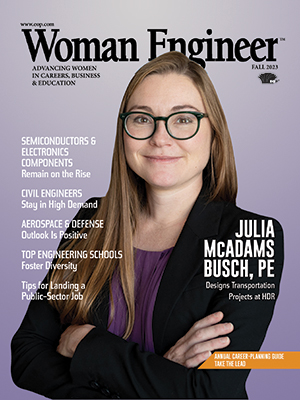| |

Woman Engineer Magazine, launched in 1979, is a career-guidance and recruitment magazine offered at no charge to qualified women engineering, computer science and information technology students & professionals seeking employment and advancement opportunities in their careers.
This magazine reaches students and professional women engineers nationwide at their home addresses, colleges and universities, and chapters of student and professional organizations.
If you are a woman engineering student or professional, Woman Engineer is available to you FREE!

|
|
 WOMAN ENGINEER
WOMAN ENGINEER
» Featured Articles
» Subscription Information
» Reader Survey
» Companies Actively Recruiting

Northeastern Students Dive for More Marine Knowledge
Graduate and undergraduate students in Northeastern University’s Three Seas Program have been diving for more than three decades in unique locations across the globe as they progress in their knowledge of marine science.
Three Seas students currently complete dives in New England, the Caribbean and the Pacific Northwest as part of their coursework, according to a post highlighting the program on Northeastern University’s website, news.northeastern.edu/2017/10/12/photos-capture-underwater-lives-of-student-researchers.
“We expose students to all types of research they can do in the marine sciences in three very different ecosystems,” says Liz Magee, in that same post. She’s the Three Seas Program manager and diving safety officer for the Marine Science Center.
Open to both undergraduate and graduate students, the program has certified more than 450 students via the American Academy of Scientific Divers.
“We teach students how to conduct science underwater while also taking safety into consideration,” says Magee.
Last September graduate students went for a dive at the Marine Science Center in Nahant, MA as part of their Diving Research Methods course.
During that dive the new students learned how to finish a panicked diver rescue and simulate an emergency ascent. They also simulated buddy breathing, which is a rescue technique used in scuba diving “out of gas” emergencies. It’s when two divers share one demand valve.
Magee was pleased with the students’ performance that day, noting how they exceeded her expectations “dealing with the panic and adrenaline and being able to successfully save someone in a simulated scenario.”
 » Feedback for the Editor
» Feedback for the Editor
» Request Article Copy
|
|